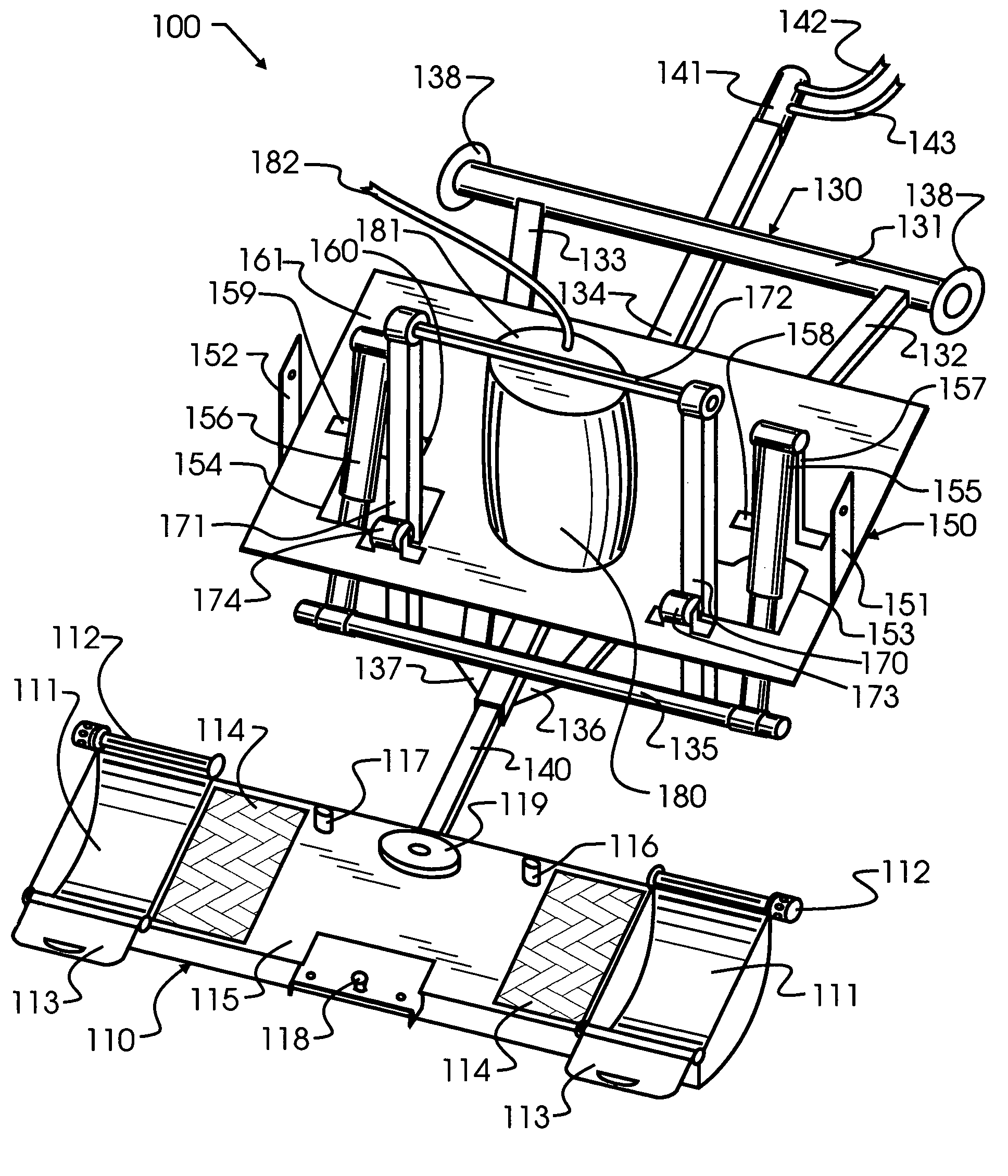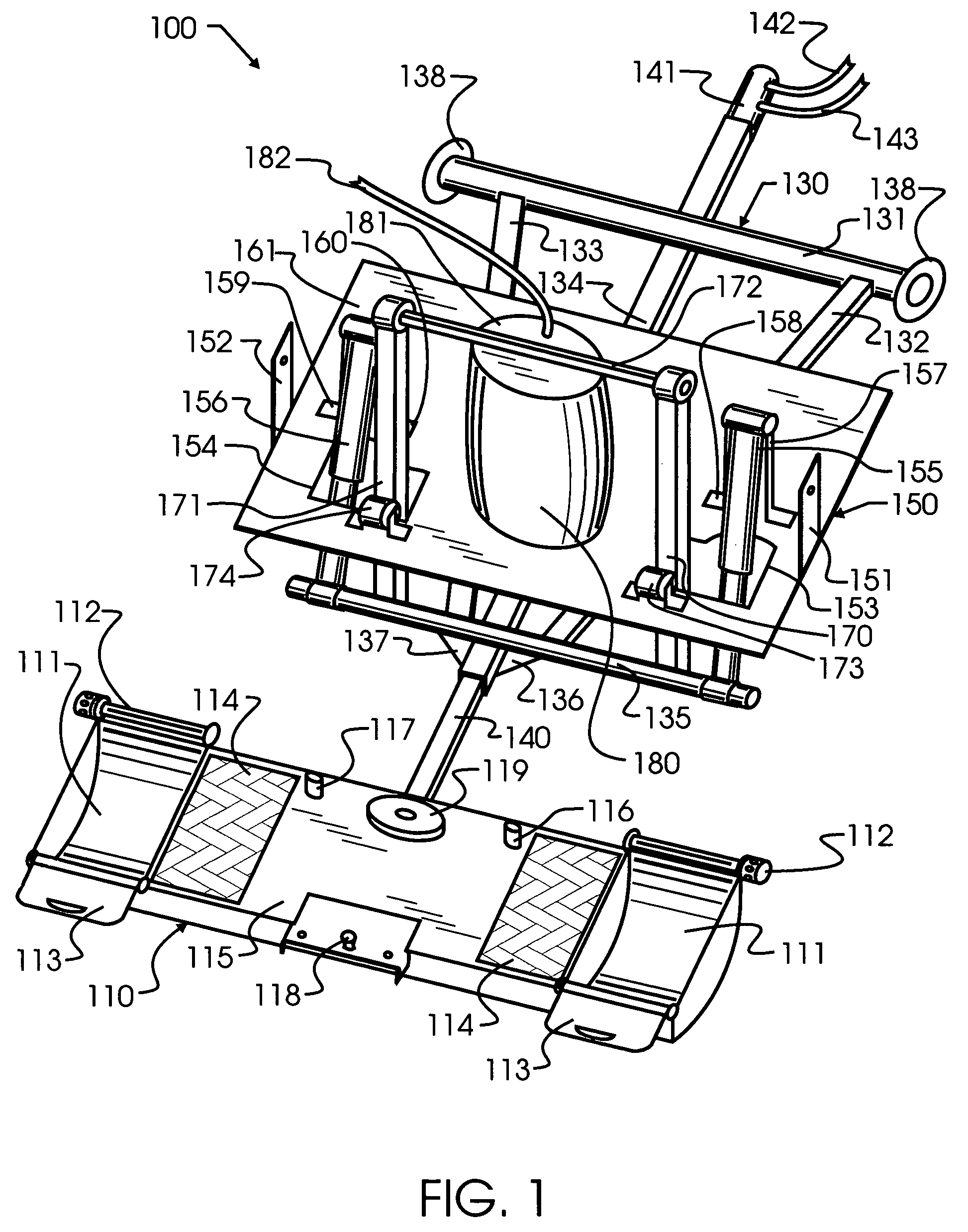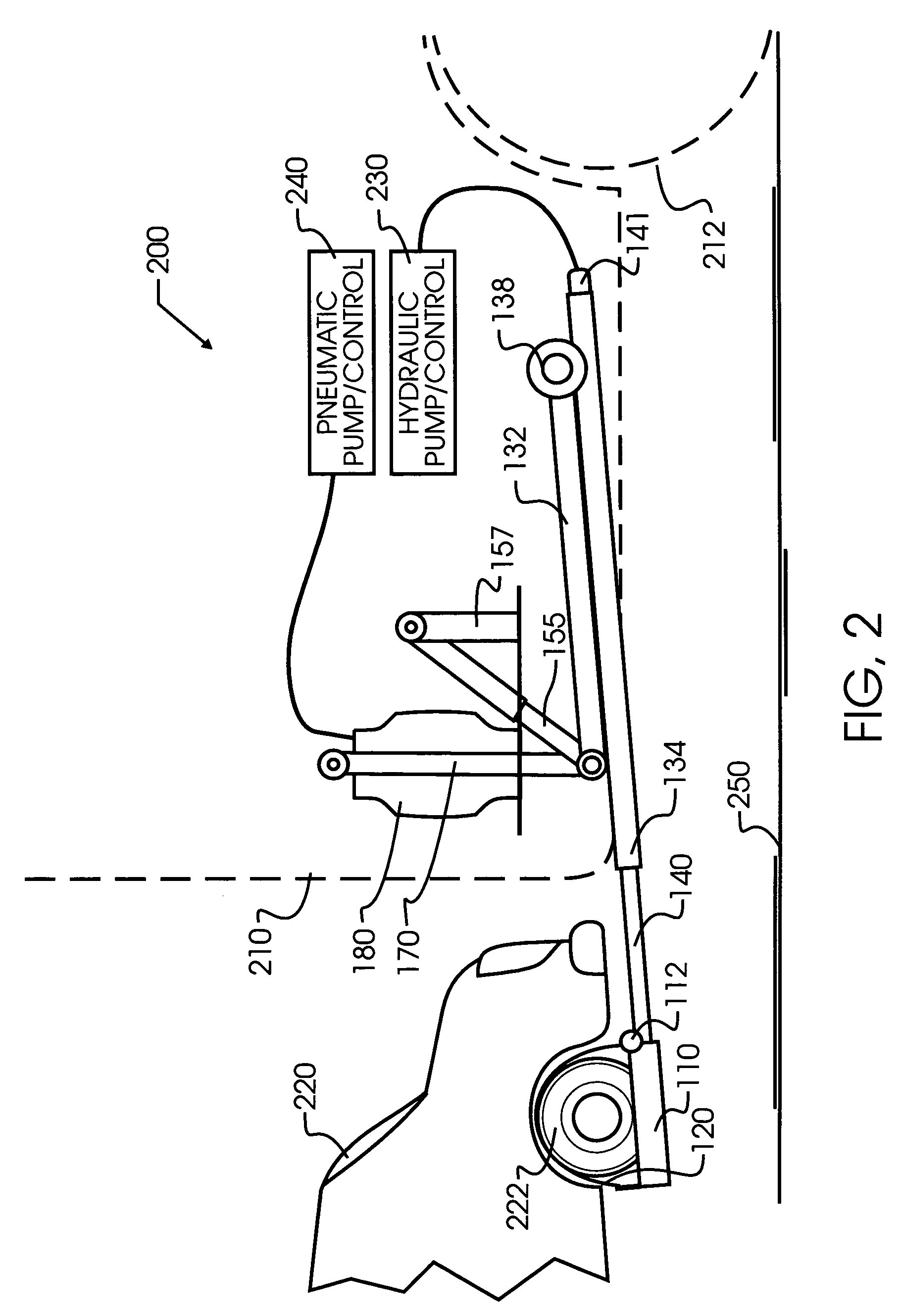Vehicular towing apparatus using air lift
a technology of air lift and towing equipment, which is applied in the field of land vehicles, can solve the problems of unduly endangered second drivers, inability to maintain the spacing between the two vehicles, and limitations of modern automatic transmission design, so as to improve the tracking of the towed vehicle, improve safety, and reduce the skill needed
- Summary
- Abstract
- Description
- Claims
- Application Information
AI Technical Summary
Benefits of technology
Problems solved by technology
Method used
Image
Examples
Embodiment Construction
[0022]Primary structural assembly 100 of preferred embodiment vehicular towing apparatus 200 includes a towing and transporting platform 110, a framework 130, and a suspension assembly 150. Towing and transporting platform 110 is provided with small ramps 113 and wheel receiving cusps 111 which will serve to support the front wheels 222 of vehicle 220. As can be best seen from FIG. 2, a strap 120 may be provided to securely attach tire 222 to wheel cusp 111 during transport. In the preferred embodiment, a ratchet 112 is provided to tighten strap 120, as is known in the general hardware field of tie-down devices. Alternative methods of attachment between vehicle 220 and platform 110 are contemplated, and will be obvious to those skilled in the art. For example, while a flaccid strap is most preferred, a chain-type fastener and chain may also be used. Furthermore, other vehicles besides passenger cars and utility vehicles may be transported. In such instances, different geometries of ...
PUM
 Login to View More
Login to View More Abstract
Description
Claims
Application Information
 Login to View More
Login to View More - R&D
- Intellectual Property
- Life Sciences
- Materials
- Tech Scout
- Unparalleled Data Quality
- Higher Quality Content
- 60% Fewer Hallucinations
Browse by: Latest US Patents, China's latest patents, Technical Efficacy Thesaurus, Application Domain, Technology Topic, Popular Technical Reports.
© 2025 PatSnap. All rights reserved.Legal|Privacy policy|Modern Slavery Act Transparency Statement|Sitemap|About US| Contact US: help@patsnap.com



